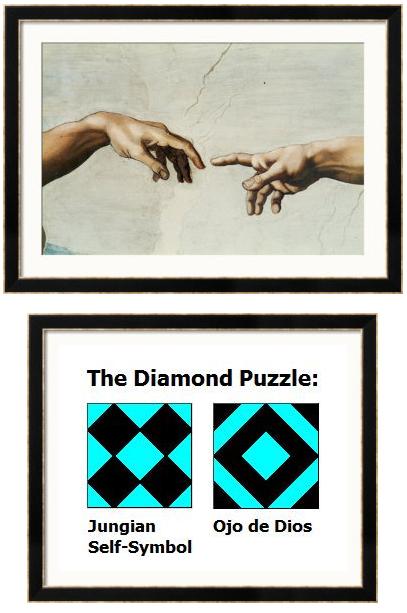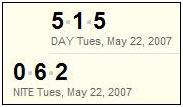

A death on the date of the above symmetry chat,
Wednesday, August 17, 2016 —
An Hispanic Hollywood moment:
Ojo de Dios —
Click for related material.
For further Hispanic entertainment,
see Ben Affleck sing
"Aquellos Ojos Verdes "
in "Hollywoodland."
From a check tonight of The New York Review of Books —

These NYRB stories from May 15 and May 13 suggest a
review of images on Ratner's Star and on the Eye of God.
Above image reposted from Jan. 10, 2014
|
I. The structures in the Diamond Puzzle… Click on image for Jungian background. II: The structure on a recent cover of Semiotica… |
Above images reposted from May 5, 2016
Related material: The previous post, Dueling Formulas.
Excerpt from a post of November 4, 2009 —
|
I. The structures in the Diamond Puzzle… Click on image for Jungian background. II: The structure on a recent cover of Semiotica… |
For some related material, see a search
for Solomon Marcus in this journal.
"Remember, Genesis IS Skynet."
Bloomberg News today:
Why 2015 Was a Breakthrough Year in Artificial Intelligence
"Computers are 'starting to open their eyes,' said a senior fellow at Google."
… and Arthur Koestler
|
The theme of the January 2010 issue of the
Notices of the American Mathematical Society was “Mathematics and the Arts.”
Related material:
|
See also two posts from the day Peter Jennings died—
In memory of a Brazilian writer who died at 73 on Oscar day— three symbols and a link.
 |
|
 |
 |
Related material—
"I really have nothing to add," "Ojo de Dios," and "Red on Gray."
In memory of Jane Russell —
H.S.M. Coxeter's classic
Introduction to Geometry (2nd ed.):

Note the resemblance of the central part to
a magical counterpart— the Ojo de Dios
of Mexico's Sierra Madre.
Related material— page 55 of Polly and the Aunt ,
by Mary E. Blatchford.
Google Logo July 11, 2010—

"Oog" is Dutch (and Afrikaans) for "eye."
Strong Emergence Illustrated
(May 23, 2007 — Figures from Coxeter)—
The 2007 "strong emergence" post compares the
center figure to an "Ojo de Dios."

Arthur Koestler by David Levine,
New York Review of Books,
December 17, 1964
| A Jesuit at the Gerard Manley Hopkins Archive: ‘Bisociation’: The Act of Creation Koestler’s concept of ‘bisociation’… enters into the very ‘act of creation.’ In every such act, writes Koestler, the creator ‘bisociates,’ that is, combines, two ‘matrices’– two diverse patterns of knowing or perceiving– in a new way. As each matrix carries its own images, concepts, values, and ‘codes,’ the creative person brings together– ‘bisociates’– two diverse matrices not normally connected. — Joseph J. Feeney, S.J. |
See also December 9, 2009:
The theme of the January 2010 issue of the
Notices of the American Mathematical Society
is “Mathematics and the Arts.”
Related material:
The theme of the January 2010 issue of the
Notices of the American Mathematical Society
is "Mathematics and the Arts."
Related material:
The Diamond Puzzle
may be downloaded by
viewing it in Internet Explorer
and saving it in the
"web archive" (*.mht) format.
As noted here yesterday, Claude Levi-Strauss may have died on Devil's Night, on Halloween, or on All Saints' Day. He was apparently a myth-transformer to the end.
The Independent says today he died on Sunday, All Saints' Day. Its eulogy, by Adam Kuper, is well-written, noting that linguist Roman Jakobson was a source of Levi-Strauss's theory of oppositions in myth, and observing that
"… binary oppositions tend to accumulate to form structures…."
Yes, they do. Examples:
I. The structures in the Diamond Puzzle…
Click on image for Jungian background.
II: The structure on a recent cover of Semiotica…
The Semiotica article by mathematical linguist Solomon Marcus is a defense of the Levi-Strauss canonic formula mentioned here yesterday.
It is available online for $40.
A less expensive, and possibly more informative, look at oppositions in linguistics is available for free online in a 1984 master's thesis (pdf, 8+ mb)–
"Language, Linguistics, and Philosophy: A Comparison of the Work of Roman Jakobson and the Later Wittgenstein, with Some Attention to the Philosophy of Charles Saunders Peirce," by Miles Spencer Kimball.

Steven Miessner, keeper
of the Academy’s Oscars,
died of a heart attack at 48
on Wednesday, July 29, 2009:
Click the above to enlarge.

Steve Miessner, the keeper of the Oscars,
packages the statues for transport
to Kodak Theatre in Los Angeles
in preparation for the 81st
Academy Awards ceremony held
on Sunday, Feb. 22, 2009
(Chris Carlson/AP).
From the date of
Miessner’s death:

Log24 on Thursday, July 30, 2009Annals of Aesthetics, continued: Academy Awards “First of all, I’d like “A poem cannot exhaust reality, — At War with the Word: |
— Quoted here July 29, 2009
(the day the keeper of
the Oscars died)
Possible clues:
From Google News at about
7 AM ET Mon., Aug. 3, 2009:
Henry Louis Gates Jr. mulls moving over death threatsBoston Herald – – 6 hours ago
CHILMARK – Black scholar Henry Louis Gates Jr. has received numerous death threats since he accused a white officer of …
Death threats may make Gates moveThe Daily Inquirer – 4 hours ago
Henry Louis Gates Jr. said yesterday that Harvard University suggested he move after receiving numerous death threats since he accused a white officer of …
Gates: I’ve received death threatsNECN – 9 hours ago
… Gates spoke at a book signing on Martha’s Vineyard. He also said that he has received death and bomb threats after the incident at his Cambridge home. …
Black scholar says he’s able to joke about arrestThe Associated Press – – 17 hours ago
Gates said he received numerous threats after the incident, including an e-mail that read, “You should die, you’re a racist.” Gates has changed his e-mail …
Gates grateful for island havenCape Cod Times – – 4 hours ago
As a result of death threats and bomb threats, he hasn’t returned to his Cambridge home, leased from Harvard University. The university has encouraged him …
Gates makes public appearance after race debateWorcester Telegram – – 20 hours ago
Gates, who spoke at a book signing on Martha’s Vineyard Sunday, says there also have been some serious moments. He says he received death and bomb threats …
|

Related material:
Dialogue from Forbidden Planet —
Dialogue from another story —
“Sizewise?”
“Brainwise, but what they did was multiply me by myself into a quadratic.”
— Psychoshop, by Bester and Zelazny, 1998 paperback, p. 7
“… which would produce a special being– by means of that ‘cloned quadratic crap.’ [P. 75] The proper term sounds something like ‘Kaleideion‘….”
“So Adam is a Kaleideion?”
She shook her head.
“Not a Kaleideion. The Kaleideion….”
— Psychoshop, 1998 paperback, p. 85
|
“Kaleidoscope turning…
Shifting pattern within
|
“When life itself seems lunatic,
who knows where madness lies?”
— For the source, see
Joyce’s Nightmare Continues.
Back to the Garden
Film star Richard Widmark
died on Monday, March 24.
From Log24 on that date:
"Hanging from the highest limb
of the apple tree are
the three God's Eyes…"
Related material:
The Beauty Test, 5/23/07–
H.S.M. Coxeter's classic
Introduction to Geometry (2nd ed.):

Note the resemblance of
the central part to
a magical counterpart–
the Ojo de Dios
of Mexico's Sierra Madre.
From a Richard Widmark film festival:
GARDEN OF EVIL
Henry Hathaway, 1954
"A severely underrated Scope western, shot in breathtaking mountain locations near Cuernavaca. Widmark, Gary Cooper and Cameron Mitchell are a trio of fortune hunters stranded in Mexico, when they are approached by Susan Hayward to rescue her husband (Hugh Marlowe) from a caved-in gold mine in Indian country. When they arrive at the 'Garden of Evil,' they must first battle with one another before they have to stave off their bloodthirsty Indian attackers. Widmark gives a tough, moving performance as Fiske, the one who sacrifices himself to save his friends. 'Every day it goes, and somebody goes with it,' he says as he watches the setting sun. 'Today it's me.' This was one of the best of Hollywood veteran Henry Hathaway's later films. With a brilliant score by Bernard Herrmann."
See also
the apple-tree
entries from Monday
(the date of Widmark's death)
and Tuesday, as well as
today's previous entry and
previous Log24
entries on Cuernavaca.
— Attributed to Euclid
There are, however, various non-royal roads. One of these is indicated by yesterday's Pennsylvania lottery numbers:

The mid-day number 515 may be taken as a reference to 5/15. (See the previous entry, "Angel in the Details," and 5/15.)
The evening number 062, in the context of Monday's entry "No Royal Roads" and yesterday's "Jewel in the Crown," may be regarded as naming a non-royal road to geometry: either U. S. 62, a major route from Mexico to Canada (home of the late geometer H.S.M. Coxeter), or a road less traveled– namely, page 62 in Coxeter's classic Introduction to Geometry (2nd ed.):

This topic Coxeter offers as an
illustration of remarks by G. H. Hardy
that he quotes on the preceding page:

Another example of strong emergence: a group of 322,560 transformations acting naturally on the 4×4 square grid— a much larger group than the group of 8 symmetries of each component (square) part.
The lottery numbers above also supply an example of strong emergence– one that nicely illustrates how it can be, in the words of Mark Bedau, "uncomfortably like magic."
(Those more comfortable with magic may note the resemblance of the central part of Coxeter's illustration to a magical counterpart– the Ojo de Dios of Mexico's Sierra Madre.)
Powered by WordPress